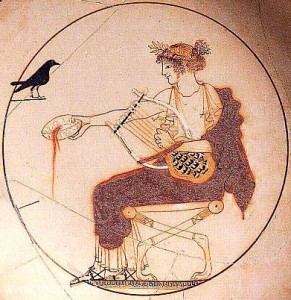Something amazing is happening in Greater Boston! Two people meeting on stage, discussing their stories on camera….
Wait…that doesn’t sound incredible, does it? What if the two people are a doctor and patient sharing their experiences with each other? What if they are a doctor and patient discussing their LIVES?
Two Perspectives on Medicine
“I listened to the mantra that we need to see more patients, more efficiently, and work longer hours as if I were listening to the drumbeat at a funeral march….health care companies and patients need to recognize that those of us who chose to study medicine are not merely well trained machines but humans who strive to deliver care with compassion, empathy, and expertise.” ~Anonymous
“Lying on a gurney…in real fear of my life…at that moment I wasn’t worried about …a cost benefit analysis…a patient in the American healthcare system has very little leverage, has very little knowledge, has very little power…”~Steven Brill
These comments on healthcare–one from an anonymous pediatrician who has “quit medicine;” the other, a healthcare journalist turned open-heart surgery patient who writes about healthcare costs–represents the current atmosphere of medicine in the US .
Why a storytelling project?
Storytelling is an essentially human behavior. Through our stories, we explain; we commune  and support; we gain purpose and understanding. We create meaning.
and support; we gain purpose and understanding. We create meaning.
Even looking back, to folk tales, myths and legends, we find truths that resonate. Our forefathers observed animals and created sense-making stories. They watched the raven, one of the smartest of birds, live with humans, scavenge, follow, and craftily solve problems.
In folk tales, the raven is a messenger. The Norse god, Odin had a raven on each shoulder that went out daily into the world to bring him news. The raven is also associated with war and death since it was seen on the battlefield making a meal of those who had died. In several cultures, the raven is also associated with healing.
In most of these stories the raven starts out as a white bird. Only after it must share bad news is the raven punished and turned black.
Being the Messenger
Hearing your name (or that of a loved one) attached to words like cancer or diabetes or other chronic diseases is
✓Chilling
✓Distressing
✓Unnerving
✓Frightening
✓Scary
✓Alarming
✓Disturbing
✓Terrifying
Choose any synonym and it won’t encompass the profundity of the experience. What is it like to be the person who must make that attachment? “Julie, you have cancer.”
Imagine, if you will, a job in which you must be the bearer of bad news. In many ways, that is one of the essential tasks of the physician.
Bridging the Divide
The new project is trying to use storytelling to bring the experience of the messenger and the receiver together. It is called The Health Story Collaborative. Its founder is a physician and also a patient.
Annie Brewster, MD
In 2001 Annie Brews ter, a single mom, learned that she had multiple sclerosis (MS). She was a medical resident and an athlete and–as far as she was concerned–this diagnosis didn’t fit into her life.
ter, a single mom, learned that she had multiple sclerosis (MS). She was a medical resident and an athlete and–as far as she was concerned–this diagnosis didn’t fit into her life.
Annie completed her residency, remarried, had children and kept her MS a secret until 2006 when she had another bout of symptoms. Even when she was put on medication, she didn’t want people, outside her family, to know. She didn’t want to be defined by MS. Yet she yearned to hear other patient stories. She wanted to learn how others coped; how they accepted. So in 2010, she started recording patient stories. And she started working with Jonathan Adler, a psychologist whose research involves storytelling and its impact on mental health.
In psychology, “agency” is the ability to act in the world, to have influence over your own life, and to control your thoughts and behavior. Adler’s research on narrative and mental health supports the idea that storytelling increases agency. As Annie has learned, “We can only control the physical aspects of health to a certain degree, but we are always in charge of our mindset.”
Patient stories have predominated the work of The Health Story Collaborative. But recently the Collaborative has started a bold venture: bringing the physician and patient together to share their stories.
In a world where physicians are pushed to have patients in and out of the door in 15 minute increments, sharing seems limited to a list of symptoms and a prescription pad. Sadly, patients may know little to nothing about the physicians who care for them. With professional distance a high priority, patients may know little to nothing about their physician’s families and day-to-day struggles. Certainly, they can only guess the numbing effect that can occur after being the bearer of bad news, day in and day out.
Conversely, physicians may know little about their patients. They don’t know that the “non-compliance” they see in a patient may have more to do with where that patient lives than on that patient’s motivation. Perhaps they don’t know the financial and emotional impact the bad news has on their patient’s lives.
Healing Medicine With Stories
 During the first patient-physician Health Story Collaborative session, between David (physician) and Tracy (patient), David shared his frustration and bewilderment that he could not get Tracy to stay motivated to control her Type 2 Diabetes. After hearing from Tracy, David said, “Now I realize how much of her life it takes to focus on her diabetes. She’s a very, very busy person….”
During the first patient-physician Health Story Collaborative session, between David (physician) and Tracy (patient), David shared his frustration and bewilderment that he could not get Tracy to stay motivated to control her Type 2 Diabetes. After hearing from Tracy, David said, “Now I realize how much of her life it takes to focus on her diabetes. She’s a very, very busy person….”
As Annie writes, “… here at Health Story Collaborative we’ve designed a program in which a patient and a doctor come together to share and listen to one another’s personal narratives… our goal is to create a space where both patient and provider can be human.”
Understanding each other’s humanity is the beginning. As David related to Tracy, “We can do better if we trust each other more and if we understand each other more…Tracy is not perfect… and neither am I and I think we both realize that and that is the first step in realizing how we can work together.”
When the patient and the physician story are brought together, they become one story. And in that blending, a continuous story emerges…and the raven turns white again.
Now that is amazing…something to get excited about!







Kathleen, I love-love-LOVE this concept! And I especially applaud Dr. Annie for spearheading this exciting initiative that links our storytelling with agency.
As a person with three decades experience in the public relations fields, the word “agency” means something quite different among us PR types – yet it seems that lately, I’ve been hearing more and more about agency as psychologists would consider the term.
Here’s my one small bit of niggling feedback: as in most new innovations, the early adopters will be the ones who are most likely to participate yet least likely to be the ones who would most benefit.
I suspect that physicians who are already in tune with/interested in the real life stories of their patients will be most enthusiastic about participating in programs like the Health Story Collaborative.
The big question, however, is how to engage physicians who are not?
regards,
C.
I agree with your assessment and so appreciate your comment…thank you Carolyn.
I find that I have many stories that reflect my disillusionment with medicine, when I was in practice, but closer to home, since I have not been practicing. Having broken my back, and gone through the gauntlet trying to get treated for he neuropathy (neurologist told me the pain I had, as a result of cauda equina damage, was not neuropathic). Then, I went through in watching my mother being pushed through a system that had her placed two hours away getting surgery for cervical cancer. On the fourth post-op day, she was found unresponsive, in shock, in her hospital room, in bed. Had it been done a half hour away, (in a hospital closer to home) maybe I could have been there for my mother. Then again the big clinic she was sent to did not see fit to make sure her surgeon son could stay with her, in the room. Maybe nothing could have been done to prevent it. I will never know. But, the last night in the ICU made me wonder about the “death panel” thing, even more. Why would a person in her terminal stages need to have a Propofol IV running. I had it turned off when I got there. It was the night we were going to remove the respirator, since we had been convinced she was not waking up. Then, after the tubes were removed, they gave her a dose of IV Fentanyl, which she had, apparently forgotten to tell them about. She had said she had a bad reaction to it to my wife, in the recent past. It seemed that they had done many things that assured she was not going to wake up!!?
I should have suspected things were not going to go well, even before the operation! We were worked in the day of her evaluation. We kept telling them she had not eaten all day and was a diabetic. Then they called me, when we were on the two hour drive home, to tell us that her blood sugar was dangerously low(40s)! My mother had to be transported up there in an ambulance, since she was wheelchair bound, so she was not with us in the car! She was disabled from arthritis in her spine and failed back operations. But, maybe the cervical cancer she had been diagnosed with (had previous hysterectomy) was the reason, I, as a general surgeon, still had a problem making sure all of the information they needed was given to them during that whirlwind day of pre-operative history and physical. We spent almost twelve hours that day in the hospital so they could get her scheduled for the urgent surgery that she needed. Sadly, this was all due to the politics of the surgeons working in the small town hospital where she lived. They could have sent her to the cancer center in a hospital just a little more than thirty minutes away. But, their allegiance with a clinic was more important than our family’s needs. No matter what, it’s too late to change any of that now.
I have nothing but animosity towards most doctors whom I feel to be lacking in the ability to properly take care of their patients. Doctors are too restricted in the time they take evaluating and caring for complex patients, like my mother. Sadly, none of them have a graduate school education. But that is another story to tell. Having more education caused a division between me and my fellow physicians. Taking a two year course in pain management seemed to add to the schism.
I am not surprised that you, even as a physician, have experienced the loss of power that occurs when one becomes a “patient”. It happened to both my parents. I’m appalled at the care that your mother and family received. Thank you so much for sharing these stories. Keep on sharing them.
Carolyn took the words out of my mouth. I love this concept for I believe healthcare is at heart a narrative activity and illness is a call for stories and meaning. Stories can foster an empathetic healthcare model and generate a framework for a more holistic approach to treating the patient, while at the same time providing a rich source of diagnostic clues. I look forward to seeing how this project develops.
Thank you Marie for your thoughtful and eloquent comment. I agree with you!
This is so needed! We are, at our essence, stories! Not a case number or insurance status! We are human beings interconnected by these stories! I love this paradigm shift!
I’ve been a cancer patient with many surgeries. I had three done by a reconstruction dr and on the second surgery I hugged him just before I went under anesthesia. It was to show affection for this person who is giving me new breasts and to show appreciation for his skill and expertise. He wasn’t just my doc but a friend and I wanted him to know that. We don’t hug our doctors because it’s a formal situation but now I do.
Thank you so much for sharing your story Karen. It is a healing story! Kathleen
What a beautiful endeavour!
So much suffering is reduced when we deeply listen to one another and share in that space of common humanity. For healers and for patients, illness truly is a human journey and one that we must embrace in its entirety.
My mother co-ordinated as head nurse one of the 1st palliative care units in North America and she always spoke of patients as “injured storytellers”. Together we’ve written a book about bringing heart and compassion into healthcare, filled with stories from patients and caregivers that talks about how we can reduce suffering through the art of care and our shared humanity: “Stay, Breathe with Me: The Gift of Compassionate Medicine”
We are so happy to join with others in this most precious endeavour of humanizing medicine.
Thank you, Dr. Brewster and thank you, Kathleen Hoffman!
Thank you so much Irene for sharing this. I look forward to reading your book. Kathleen